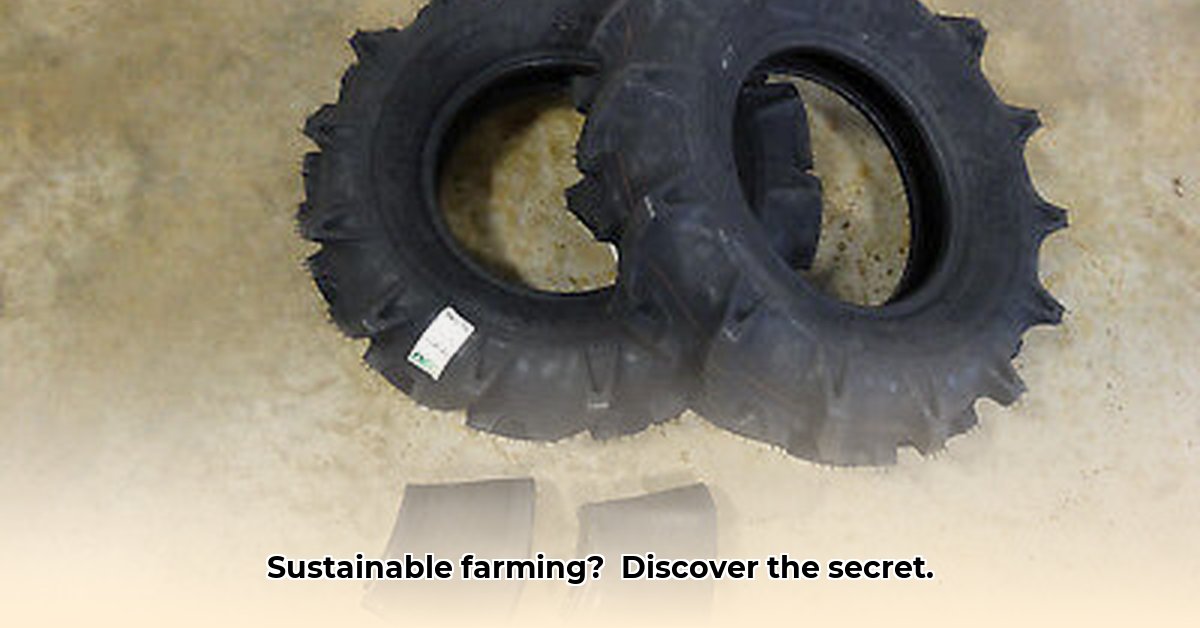
The global push for sustainable agriculture hinges on optimizing every aspect of farming, down to the smallest detail. For small-scale farmers, the humble 6.00-12 tractor tire often represents a critical yet overlooked component in this pursuit. While these tires are ubiquitous, a surprising lack of data obscures their true environmental impact, hindering efforts to create truly sustainable farming practices. For more information on similar tire sizes, check out this helpful resource: 5-14 tractor tire data. This article explores this information gap, highlighting the roles of various stakeholders and outlining a path toward a more data-driven, environmentally conscious approach to small-scale farming.
The Current State of Affairs: A Tire's Unsung Story
The 6.00-12 tractor tire is a workhorse, powering countless small-scale farming operations worldwide. These tires are readily available, reflecting a high demand. But despite their prevalence, we lack crucial data regarding their long-term environmental impact. How long do these tires typically last? What’s their fuel efficiency profile? How do they impact soil compaction under varied conditions? What's their end-of-life story? The answers are far from definitive. This information void significantly hampers our ability to assess their contribution to sustainable agriculture. This isn't a minor issue; the lack of precise data on commonly used equipment directly impacts our ability to promote truly sustainable practices.
The Sustainability Question: Untapped Potential for Improvement
The environmental footprint of a 6.00-12 tractor tire is a complex issue. A complete lifecycle assessment – from raw material sourcing and manufacturing to in-field use and disposal – is urgently needed. Currently, we lack such assessments for this specific tire size. This prevents meaningful comparisons with alternative tire types or designs, potentially hindering the adoption of more sustainable options for small-scale farms. We need to fully understand the materials used in production, their environmental impacts, and the efficiency and longevity of the tires themselves. The absence of this information prevents confident claims about the tire's contribution to sustainable farming. "We need comprehensive, transparent data on these tires' contribution to soil erosion, fuel consumption, and overall carbon footprint," says Dr. Anya Sharma, Agricultural Engineering Professor at the University of California, Davis.
The Stakeholder Perspective: A Shared Responsibility
This isn't a problem that any single stakeholder group can solve alone. Collaboration is key.
Actionable Steps for a Greener Future:
Tire Manufacturers: Conduct thorough lifecycle assessments of 6.00-12 tires (within the next year). Explore the use of sustainable materials such as bio-based rubber or recycled components (within the next 3-5 years). Optimize manufacturing processes to minimize environmental impact.
Farmers: Carefully monitor tire performance and its effect on soil health and fuel efficiency (within the next year). Implement precision farming techniques such as minimizing tractor passes and optimizing tire pressure based on soil conditions (within the next 3-5 years).
Policymakers & Regulators: Establish clear standards for environmental impact disclosures for all agricultural tires, including 6.00-12 tires (within the next year). Support research into sustainable tire alternatives and recycling programs, along with incentives for farmers to choose them (within the next 3-5 years).
Researchers: Focus research on designing tires that enhance fuel efficiency and lessen soil compaction in small-scale farming contexts (within the next year). Develop improved testing methodologies to assess tire performance under diverse soil conditions and farming practices (within the next 3-5 years).
The Path Forward: Bridging the Data Gap
Given the significant role of the 6.00-12 tire in small-scale farming, the lack of comprehensive sustainability data is unacceptable. We must prioritize data collection and analysis, rigorously evaluating the environmental impacts throughout the tire's lifecycle. This requires a joint effort involving tire manufacturers, farmers, policymakers, and researchers, working collaboratively to fill this knowledge gap. Only through such concerted action can we contribute to a future of sustainable agriculture.
Key Takeaways:
- The 6.00-12 tire is a significant part of many small-scale farming operations.
- Currently, there is a significant lack of data regarding the environmental impact of using 6.00-12 tractor tires.
- A collaborative effort among manufacturers, farmers, policymakers, and researchers is required to rectify this data gap and improve sustainable farming practices.
The future of sustainable small-scale farming depends on our ability to collect and interpret this critical data. Let's make it a priority.